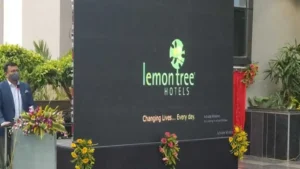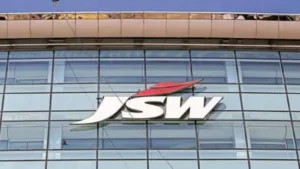Tata Motors said that domestic electric vehicle sales are expected to hit the 10k annual revenue mark by the end of the decade, and forecast green cars will account for 50% of total sales during the period. This.
The Mumbai-headquartered automaker, which has passed the thousand-dollar cumulative electric vehicle sales milestone, is now making 14-15% of its total EV sales on a quarterly basis.
“Five years ago, electric vehicles sold only 90 units per month. Today they sell 8,500 to 9,500 units per month, 100 times more… Five years ago, the industry sold about 2,000 cars. and we’re talking about an annual run rate this year of over ten thousand units, which is 50 times the growth rate,” Tata Motors passenger vehicle chief executive officer Shailesh Chandra told reporters. Chandra, who also leads the company’s electric passenger mobility industry, noted that with improved charging infrastructure and other automakers also entering the electric vehicle space, the vertical is expected expected to have sustainable growth. “In the next 5 years, why shouldn’t it grow at least 10 times closer to a million is what I mean…it will be an exciting time for the Indian consumer and for the country with the possibility of realisation. ‘a vision that has been laid down by the government,’ he noted. When asked about Tata Motors’ sales target in the electric vehicle segment, Chandra said. “We’ve actually said that for the last four years, in the next five years, we’re going to aim for 25% penetration, and by the end of the decade we’re going to have a 50% penetration rate, that’s what.” we’re aiming for.”
Tata Motors currently sells a wide range of electric vehicle models including the Tiago EV, Nexon EV and Tigor. The company has announced a three-phase strategy for electric vehicles with plans to offer different body styles at several accessible price points, in response to the changing needs of electric vehicle consumers. The automaker showcased futuristic concepts at Auto Expo 2023, Curvv, Harrier EV, Sierra EV and Avinya. The company hopes these electric vehicles will open up new customer segments in India. Chandra said that for new players entering the electric vehicle segment, the company will focus on volume growth and not worry too much about market share. “At the beginning of this calendar year, we were selling an average of about 3,500 units per month and now we are aiming for 6,500 units per month,” he added.
Tata Motors’ market share at the end of the April-June quarter was around 71% in terms of vehicle registrations. In response to a question, he noted that electric vehicles for personal use should be covered by the FAME program to achieve the stated goals of reducing CO2 emissions and other aspects.
“We have always told the government that this is a segment that needs to be supported because by all accounts, 90% of the demand (for electric vehicles) is there,” he stated. To promote electric and hybrid vehicles, a scheme worth Rs 10,000 crore under the FAME-II plan was announced in 2019. This is an expanded version of the current FAME plan (Apply and Production ( Hybrid) and Electric Vehicle) India I, which was launched on 1 April 2015, at a total cost of Rs 895 crore. In the three-wheeler and four-wheeler segment, the incentives are mainly applied to registered public transport or commercial vehicles. In the three-wheeler and four-wheeler segment, the incentives are mainly applied to registered public transport or commercial vehicles. Chandra notes that demand in the fleet segment is only 7-8% of industry demand. “So if you really want to make that change to electrification, it can only come from the individual segment…even if you look at it from a CO2 emissions perspective…And that would be import of fossil fuels… so I think from all sides it makes sense that it fits the goals for which electrification has already been started,” he added.
Citing examples from Maharashtra and Gujarat, Chandra said that when state governments also extended incentives to customer segments, sales increased significantly. “Before the announcement of the offer, we were selling 100 vehicles per month in Maharashtra. During the offer period, we peaked at 900 units per month. After removing the offer, the number stabilized. at about 750 pcs per month. So once you generate that interest it will sustain and so the government just needs to start from there in the country with a certain amount. And I think that can really help,” he said.
Chandra noted that in the future, the Tata Group is also looking into local battery production. Chandra noted that in the future, the Tata Group is also looking into local battery production. On Tesla’s main electric vehicle entering India and its potential impact on the business, Chandra said: “All competition should not be viewed as a threat, but the reality is that you have to compete and so we’ll focus on being nimble with what the competition is doing and how we can deliver a differentiated product to our customers.” In terms of sales in the tens of thousands, Chandra said this step is a springboard for the development of electrification.
It represents a rapidly evolving ecosystem that gives confidence to customers, suppliers, infrastructure players and investors to deploy new technologies and build industry capacity, Mr. said more. Such rapid growth will create significant jobs for all types of workers in new technologies, while improving air quality, reducing oil imports and turning India into a global economy, Mr. Chandra said. become the main center for the production of electric vehicles and electric vehicle components.





